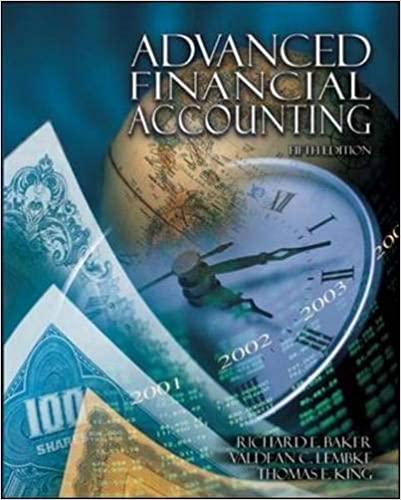Shoehorn Corp. owns 40 percent of the stock of Amalgamated Leather Tanneries and is debating the proper
Question:
Shoehorn Corp. owns 40 percent of the stock of Amalgamated Leather Tanneries and is debating the proper procedures to be used in reporting its ownership. Shoehorn Corporation produces highquality leather products and purchases approximately 85 percent of Amalgamated Leather's annual production. Because of the importance of having a dependable source of supply and one which provides high-quality leather of a uniform grade, Shoehorn paid a 15 percent premium over current market price to acquire its ownership in Amalgamated Leather. The price per share paid was approximately 250 percent of book value per share at that date. Shoehorn signed an agreement that gives the former owner the right to purchase back the shares of Amalgamated Leather anytime during the next five years at the price paid by Shoehorn. Several Shoehorn officers feel the option may be exercised.
The corporate officers of Shoehorn Corporation disagree on how best to account for the cost of the Amalgamated Leather shares. The following alternative means of accounting for the investment in Amalgamated Leather have been identified:
1. Adjust the carrying value of the shares to market value at the end of each period and report the cumulative change as an unrealized adjustment to stockholders' equity. Treat dividends received as dividend income.
2. Carry the investment at cost and treat dividends received as dividend income.
3. Carry the investment at cost plus Shoehorn's proportionate share of the undistributed earnings of Amalgamated Leather since the date of acquisition. Treat dividends received as dividend income.
4. Use the equity method established by the FASB.
\section*{Required}
a. List the advantages and disadvantages of each proposed alternative. Choose the procedure you feel is the most desirable. What assumptions must be made to make the preferred approach work? Why is this method better than the other proposed alternatives?
b. How would you determine if the procedure you have chosen can be used without violating generally accepted accounting principles?
c. Assume the procedure you have chosen is not considered acceptable by the CPA firm doing your audit. How would you proceed?
Step by Step Answer:

Advanced Financial Accounting
ISBN: 9780072444124
5th Edition
Authors: Richard E. Baker, Valdean C. Lembke, Thomas E. King





